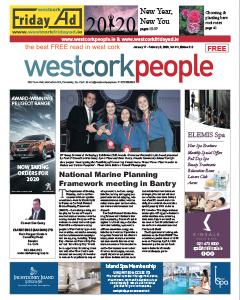As I’m writing this it’s the summer solstice and I’m trying to be present in the moment, practice some mindfulness and breathe…Being present and being a gardener are always in conflict because you’re always looking ahead to jobs that need to be done to ensure a crop to take you through the season, creating a continuous supply of blooms to sell and a nectar rich food source for our pollinators, birds and all our wildlife really.
I planted a 30ft hedge of cotoneaster bullatus about twelve years ago and it’s still up there as one of the best pollinator plants I put in the garden. It’s not a native but was introduced into cultivation in the late 1800s so it is pretty well naturalised by now. The foliage is quite striking, and it has a lovely arching habit, prefers full sun but will tolerate shade. Flowers to a human are non-descript but to the bees, wasps and hoverflies it’s nectar from the gods. I love being under it every May; listening to the buzzing is almost deafening, there are hundreds and hundreds of bees including my beloved bumblebees and possibly thousands of hoverflies – I really will have to establish a hedge nearer the tunnels especially the rose tunnel to address the invasion of green fly at that time of year. In the autumn it’s a delight for another group, our passerines, most notably blackbirds, which guard it from morning till night, but the thrushes do manage to get a look in too. This is high on my list of priority food plants and the first one I always recommend to people to plant in their garden.
On the crisis our pollinators are facing there are a few on my hitlist to be eradicated from gardens and more to the point eradicated from public council areas. I despair at some choices of Summer bedding like geraniums (zonal pelargoniums) busy lissies and modern pansies, these are hybridisation at its worst – they are plants for humans only. Again this disconnection; it’s a bit like modern roses bred to last but of no real value in a sustainable ecology.
If you’re thinking of summer bedding and supporting our pollinators there are pretty alternatives, not as showy as their sterile counterparts, but if you look at it from a different perspective and see the huge all-round benefits then I hope you’ll love them as much as I do and the rewards of a buzzing garden is heart-warming. Calendula single or semi double flowers only as the fully double ones can’t be utilised by insects. Cosmos, nasturtium (if I could only have one plant then it would have to be this) catmint, scabious, cornflowers like Florence blue, a low growing variety suitable for the front of a border and doesn’t require staking, viola’s, not the modern hybrids but the species like viola tricolour, an insect magnet packed full of goodness and really good for us too. Herbs have so many uses for us and are such a rich food source – the list is endless and the possible combinations mouth-watering!
If you’d like to know more on nectar-rich foods for wildlife and supporting a vibrant and diverse ecology, then why not join us here at Bumblebee Flower Farm on July 21 for our ‘Planting for pollinators and Me’ where we will have a talk and tour on a beautiful array of nectar-rich plants for the garden and as so many of them are edible too. Award-winning chef Eddie Attwell of the Glengarriff Eccles will be joining to demonstrate the incredible uses for our cultivated and wild native varieties of flowers and herbs. There will be opportunities to taste the incredible food and drinks (non-alcoholic) created in Eddie’s truly unique style.
€10 entry, proceeds to bumblebee conservation (see advert).


